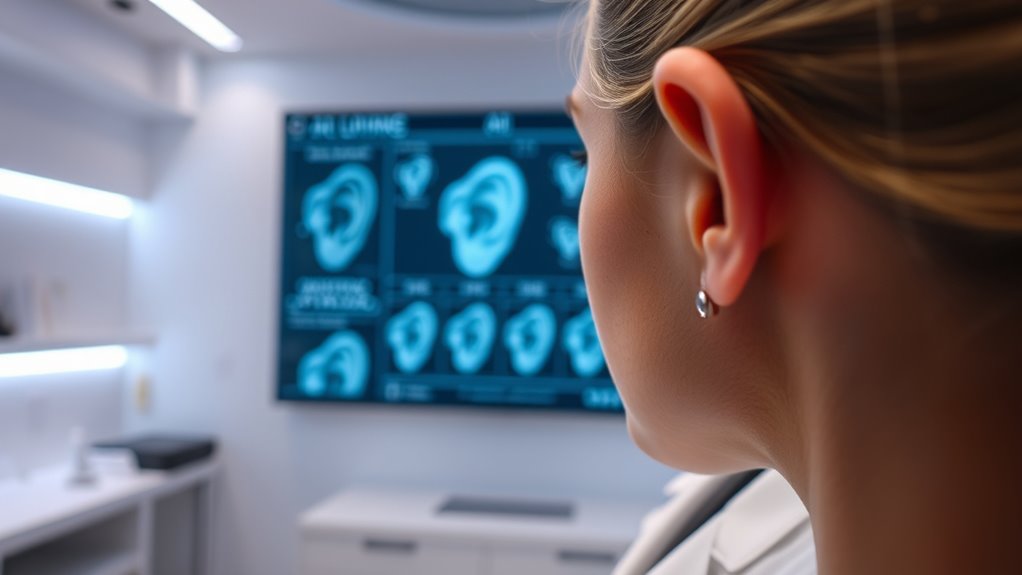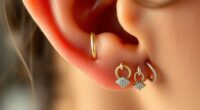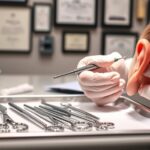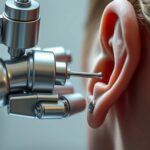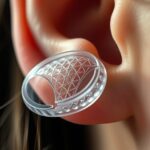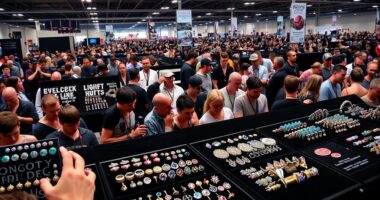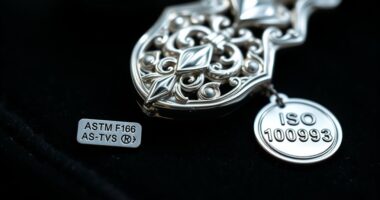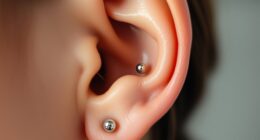AI can help analyze your preferences and suggest some options for ear piercings, but it can’t replace the expertise and judgment of an experienced piercer. Skilled professionals consider your unique anatomy, hygiene, and safety details—things AI can’t fully evaluate. When it comes to precise placement and ensuring a safe, comfortable piercing, human expertise is essential. If you’re curious about how technology and experience work together, you’ll find more insights ahead.
Key Takeaways
- AI can assist with recommendations but cannot fully assess individual anatomical nuances crucial for safe piercing.
- Experienced piercers provide personalized evaluations, considering cartilage, skin sensitivity, and safety factors AI cannot interpret.
- Human expertise ensures proper technique, hygiene, and complication management that algorithms currently lack.
- AI tools can streamline consultations but should complement, not replace, skilled professionals.
- Combining human judgment with AI enhances safety, personalization, and overall piercing outcomes.

Artificial intelligence is transforming how we discover and enjoy new music by enabling AI-driven ear curations that deliver personalized listening experiences. But this technology isn’t limited to music alone—it’s making waves in other areas, like piercing and body modifications. As you consider getting a piercing, you might wonder if algorithms can truly replace the expertise of experienced piercers. While AI can assist in some aspects, it’s essential to understand its limitations, especially when it comes to piercing safety and customer personalization.
Piercing safety is a top concern for anyone looking to get pierced. An experienced piercer understands the nuances of anatomy, hygiene, and proper technique, which are indispensable to prevent infections or complications. AI-driven systems can analyze data to suggest ideal piercing locations based on general anatomical models, but they lack the ability to assess individual differences that only a skilled piercer can recognize. For example, a person’s unique cartilage structure or skin sensitivity can greatly influence the outcome, and an algorithm can’t yet fully account for these subtleties. Relying solely on AI for piercing decisions risks overlooking essential safety factors, which could lead to infections, improper placement, or longer healing times.
Customer personalization is another critical aspect where AI shows promise, but it still has limitations. In theory, AI can analyze your preferences, skin type, and past reactions to recommend the best jewelry or placement options. Some piercing studios employ AI tools to streamline consultations, helping tailor recommendations to your individual profile. However, true customer personalization goes beyond data points—it involves understanding your aesthetic goals, comfort levels, and personal history, which require human empathy and experience. An experienced piercer can interpret your desires and concerns, adjusting the procedure accordingly, something AI isn’t fully capable of doing yet.
Additionally, the diversity and complexity of anime movies demonstrate that human creativity and storytelling often surpass algorithmic capabilities, emphasizing the importance of expert insight. While AI can support the piercing process by providing data-driven insights and enhancing consultations, it cannot replace the nuanced judgment of a seasoned professional. The human element still plays a indispensable role in ensuring piercing safety and delivering personalized care. AI tools should be seen as complementary, not substitutes, for the expertise of skilled piercers. If you’re considering a piercing, prioritize choosing a reputable professional who combines experience with modern technology to guarantee your safety and satisfaction. Ultimately, a blend of human expertise and technological innovation offers the best path to a safe, personalized piercing experience.
Frequently Asked Questions
How Do AI Algorithms Ensure Ear Anatomy Safety?
AI algorithms guarantee ear anatomy safety by analyzing detailed images and data to identify the precise location of cartilage, nerves, and blood vessels. They follow strict safety protocols, minimizing risks of incorrect placement or damage. By customizing piercings based on individual ear anatomy, these algorithms help prevent complications, ensuring a safer experience. You can trust that AI-driven systems prioritize your safety through accurate, data-driven assessments aligned with established safety standards.
Can AI Recommend Personalized Piercings Based on Skin Type?
Sure, AI can seem like your personal style guru, but can it truly know your skin compatibility? While it offers style suggestions tailored to your skin type, it might miss the subtle nuances an experienced piercer catches. So, yes, AI can recommend personalized piercings based on skin, but don’t rely solely on algorithms. Your skin’s unique reactions still call for the expert touch of a seasoned professional.
What Are Limitations of AI in Detecting Ear Infection Risks?
When it comes to detecting ear infection risks, AI faces limitations in algorithm accuracy. You can’t solely rely on algorithms to identify signs of an ear infection because they might miss subtle symptoms or misinterpret data. While AI can analyze images or data, it lacks the nuanced judgment of an experienced piercer or medical professional. For accurate diagnosis and safety, always consult a healthcare expert rather than depending entirely on AI.
How Does AI Handle Cultural or Aesthetic Preferences?
When it comes to cultural nuances and aesthetic preferences, AI handles them by analyzing large datasets and recognizing patterns. You might find that algorithms can suggest styles aligned with popular trends, but they often lack the understanding of deeper cultural significance or personal tastes. While AI can assist in matching aesthetic preferences, it still needs human insight to truly respect individual and cultural nuances, ensuring piercings are both beautiful and meaningful.
Are There Legal Regulations for AI in Professional Piercing Services?
You might think AI in piercing has no legal rules, but that’s not true. Legal compliance and regulatory oversight are vital for AI-powered services. Authorities are establishing standards to guarantee safety and ethical use. While AI can assist, it must follow strict regulations to protect clients and maintain professional standards. So, regulations exist to guide AI’s role in piercing, ensuring it complements rather than replaces experienced piercers.
Conclusion
While AI-driven ear curations promise precision and consistency, they can’t quite capture the artistry of an experienced piercer. Think of algorithms as a paintbrush—capable but lacking the soul behind each stroke. As technology advances, you might wonder if machines will someday match human intuition, but for now, it’s the skilled hand that transforms a simple piercing into a work of art. Until then, trust the artist’s eye over the machine’s eye.
I’m Gillian. I love piercings and tattoos- there’s something about the way they make your body look that just makes me happy. I started this blog to share my passion for piercings and tattoos with the world and to help people who are thinking of getting their first piercing or tattoo.
I’ve been writing about piercings and tattoos for a while now on piercings-body.com. I love sharing my knowledge with others and helping people make informed decisions about their bodies.

